How to Choose an Eco-Friendly Sunscreen
Estimated reading time: 14 minutes
Environmentally friendly sun protection should be one of your first thoughts when planning on spending time outdoors – regardless of the season! Outdoor lovers know that harmful UV rays can lead to painful sunburns or even skin cancer. Incorporating an eco-friendly sunscreen into your beauty routine can help you avoid sun damage. So for your health and the environment, next time you pack for travel or your next sustainable outdoor adventure, include that reef-friendly sunscreen!
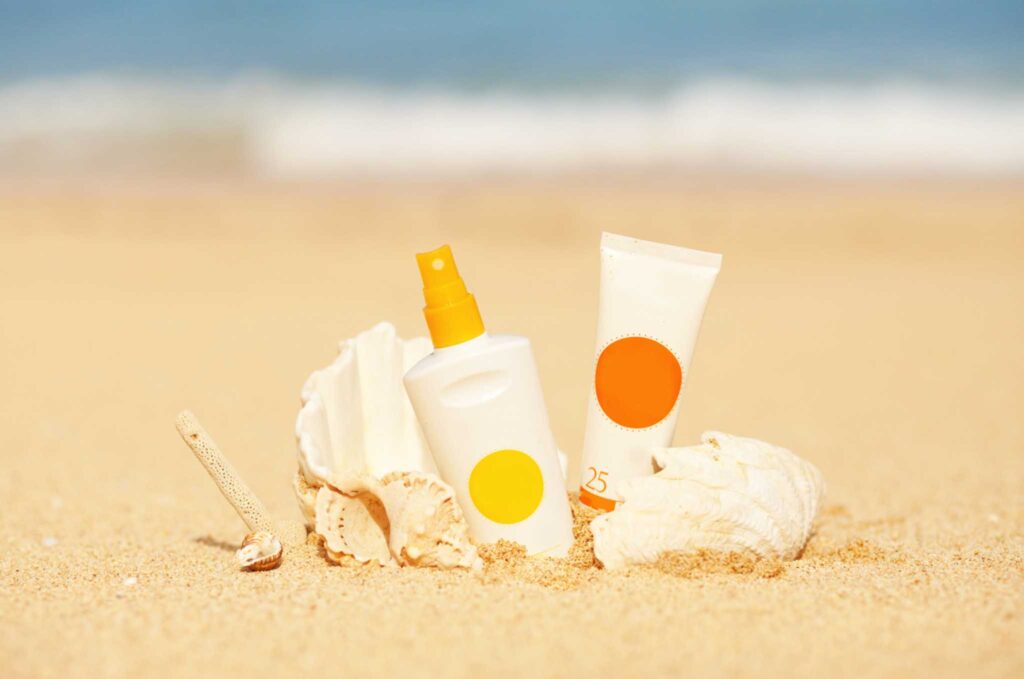
There are many factors to consider when choosing a sunscreen – from its water resistance, SPF factor, and ingredients, to whether or not it is biodegradable or reef safe. When we go swimming after applying sunscreen, a portion of its components ends up in the water. If you’ve chosen a marine-friendly or biodegradable sunscreen, you can do so with a clear conscious.
Hoping to purchase some eco-friendly sunscreen and need recommendations? Check out our article “Best Reef-Friendly Sunscreens 2024” now!
Jump ahead:
Mineral vs. Chemical Sunscreen
How Do You Know If Sunscreen Is Reef-Safe or Reef-Friendly?
Choosing a Type of Sunscreen That Fits Your Needs
What is Eco-Friendly Sunscreen?
Before we delve into what makes sunscreen eco-friendly, we must first break down the main types of sunscreens available.
All Natural Mineral Sunscreens
How They Work
Mineral sunscreen, also known as physical sunscreen, blocks harmful UV rays from reaching the skin, protecting you from sunburn. Ingredients of mineral based sunscreens include zinc oxide and titanium dioxide, which aren’t absorbed into the skin but act as a shield.
For this reason, the FDA has proposed that these ingredients be classified as safe and effective. Aside from being deemed health-safe, another advantage of mineral sunscreen is that it starts providing UV protection as soon as you put it on.

The Cons
Be mindful, though, that some mineral sunscreens contain nano-sized particles of zinc oxide and titanium dioxide, which increases their ability to be rubbed into your skin. This might ensure that you don’t get that filmy white appearance, but it can mean they may now have the ability to penetrate the skin. There haven’t been any studies to conclude whether or not this is dangerous for humans, but nano-particles can be harmful to coral reefs (more on this later).
Studies have also shown inhalation concerns for zinc oxide and titanium dioxide ingredients, so you should avoid spray and powdered forms as they are potentially harmful mineral sunscreens.
Sign up for our newsletter here and we’ll send you a free copy of our “Ultimate guide: Understanding Sustainability!”
Chemical Sunscreens
How They Work
Chemical sunscreen has chemical UV filters as active ingredients rather than physical ones. These chemical ingredients are absorbed into your skin and then convert the UV rays into heat, which is released and dissipates. This is why you need to apply these sunscreens to your skin with enough time to allow them to absorb before heading out into the sun.
The Cons
Most chemical sunscreens contain chemicals in quantities that have been deemed unsafe for human health, such as octisalate and homosalate, to name a few. Many chemical ingredients in sunscreen have been shown to cause hormone disruption, increased breast cancer risk, and a host of other health issues. Seven harmful chemicals commonly used have already been banned in several countries, but not necessarily in the U.S.
Chemical sunscreen can also contain harsh ingredients that are unsafe for us and harmful to the environment and aquatic life. Two of these other chemical ingredients are oxybenzone and octinoxate, which have been found to cause bleaching of coral reefs and have adverse effects on other marine life. You can find more information on all of these chemical ingredients on the Environmental Working Group’s website.
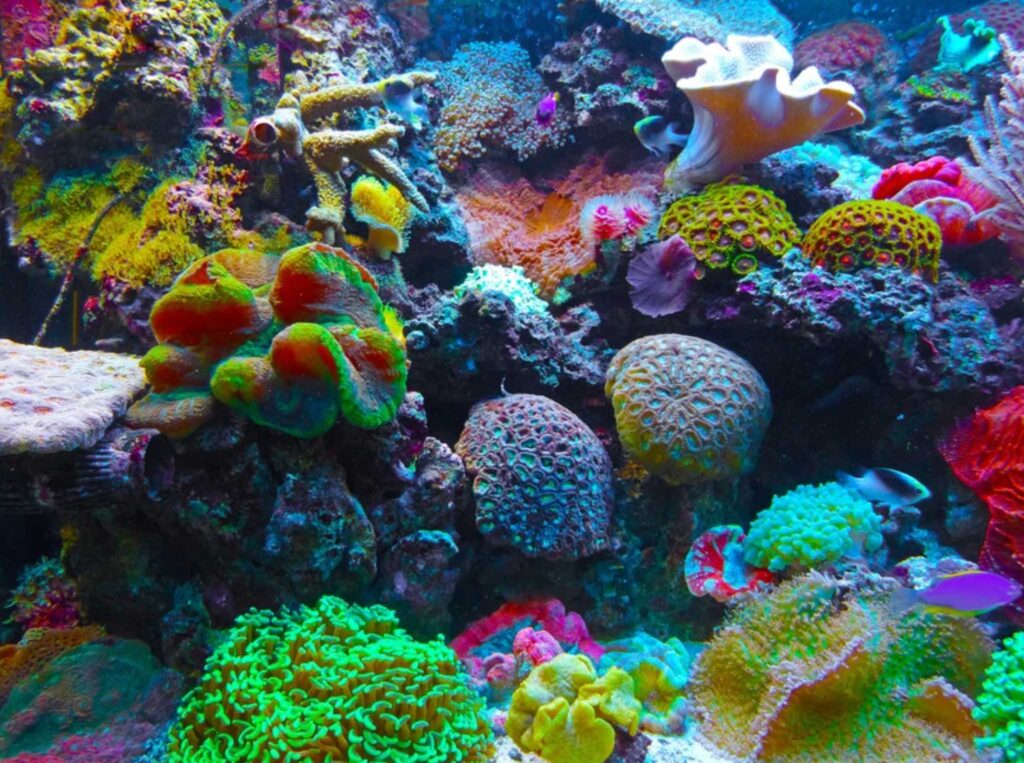
How Do You Know If Sunscreen Is Reef-Safe or Reef-Friendly?
Consider Active and Inactive Ingredients
Active Ingredients
Most of the active chemical filters found in chemical sunscreens have been shown to, or are expected to have, adverse effects on aquatic life. Oxybenzone, in particular, was found to have four significant effects on coral reefs – bleaching, DNA damage, endocrine disruption, and deformities in this study. Essentially, chemical sunscreens are not eco-friendly sunscreens.
The active ingredients in mineral sunscreens, zinc oxide, and titanium dioxide, have not been linked to adverse health effects in humans or ocean life. However, when the particles in these ingredients are reduced in size to what we then call nano-particles, they can harm marine life.
This article by National Geographic outlines a study published in the journey of Environmental Science and Toxicology. The study found that metal nano-particles, such as zinc, can harm tiny marine worms, crustaceans, algae, fish, mussels, and other sea creatures.

Inactive Ingredients
Sunscreen includes inactive ingredients such as water, oils, and lotions that keep everything together and allow the sunscreen to spread easily on your skin. Some of these can also be harmful substances to human and marine health. These include parabens, PEGs, fragrances, BHT, phthalates, phenoxyethanol, plastic polymers, and retinols. For a detailed breakdown, check out The Choosy Chick’s glossary of harmful substances and other chemicals found in many personal care products.
Read Product Descriptions Carefully
Don’t be fooled by terms like “reef-safe ingredients” or “biodegradable sunscreen” on the packaging. Although, if true, this would mean the product is an eco-friendly sunscreen, the U.S. government does not regulate these terms. When a brand labels its product in a way that makes it appear more environmentally friendly than it is, we call this greenwashing. Remember to read the label carefully, checking for the ingredients listed in the chart below and avoiding them if possible.
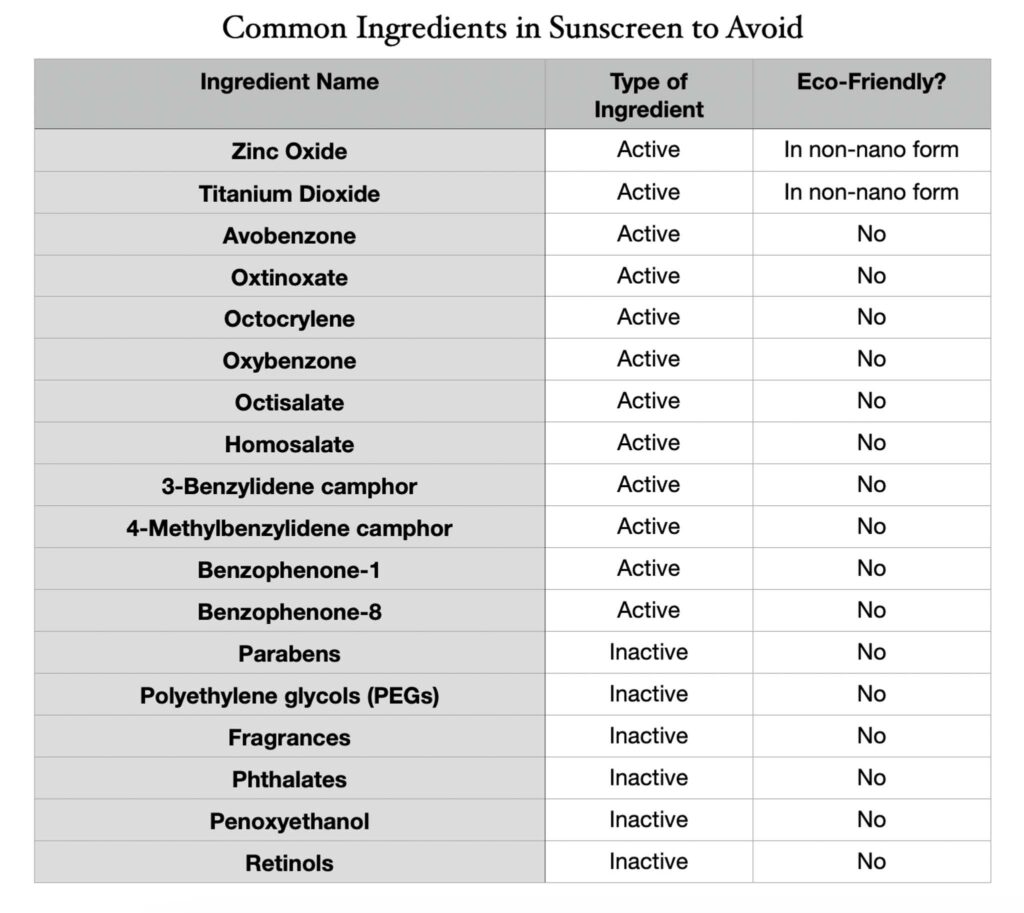
You can also look for third-party sustainability certifications on the product to ensure it is eco-friendly.
Choose a Type of Sunscreen That Fits Your Needs
Sensitive Mineral Sunscreen Lotion
You definitely want natural and organic mineral sunscreen if you have sensitive skin. It should be fragrance-free, and if you’re celiac, you may need to consider whether or not it is gluten-free. For dry skin types, you can look for organic ingredients like shea butter, coconut oil, or macadamia nut oil to keep you moisturized chemical-free. I use those that are made for sensitive skin and are sweat resistant as face sunscreen.
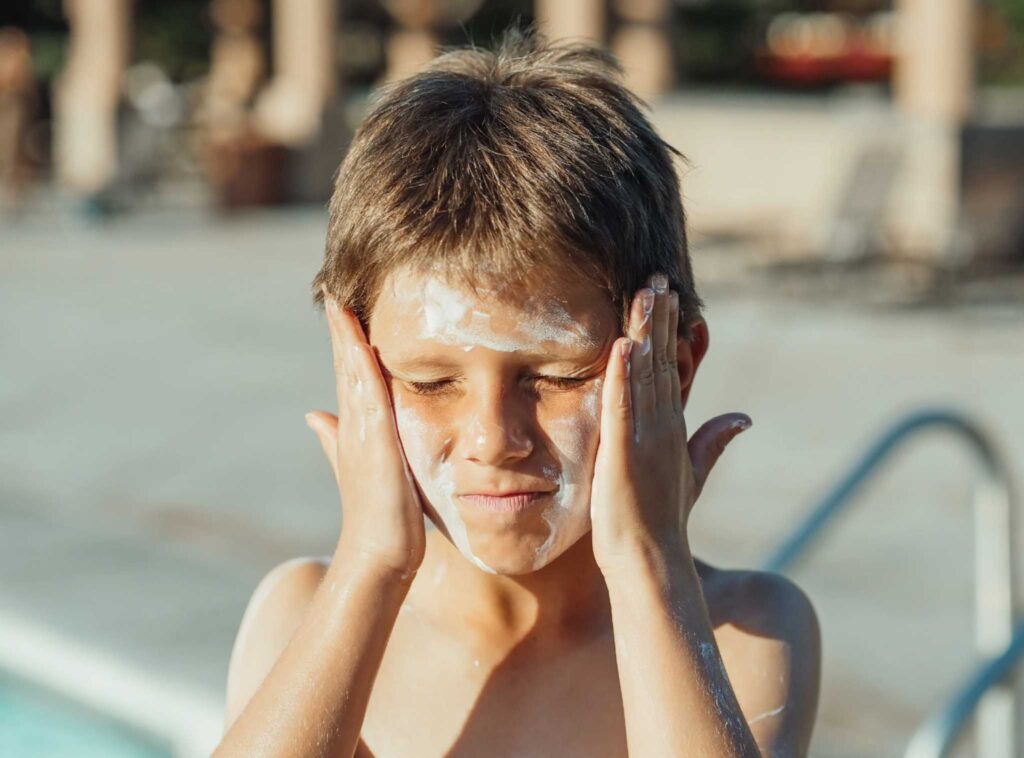
Activity Based Eco-Friendly Sunscreens
Whether you’re into non-stop swimming, water sports, or relaxing with a good book at the campsite, there’s a reef-safe sunscreen for you!
If your outdoor adventures have you in the water for long periods of time, you definitely want sunscreen with water resistance. The FDA no longer approves sunscreens to be labeled as “waterproof,” but some excellent water-resistant mineral sunscreens retain their SPF for up to 80 minutes of fun in the sun. These options also cover you if you need something sweat resistant (like me!)
Don’t forget to slather up your kids and the whole family!
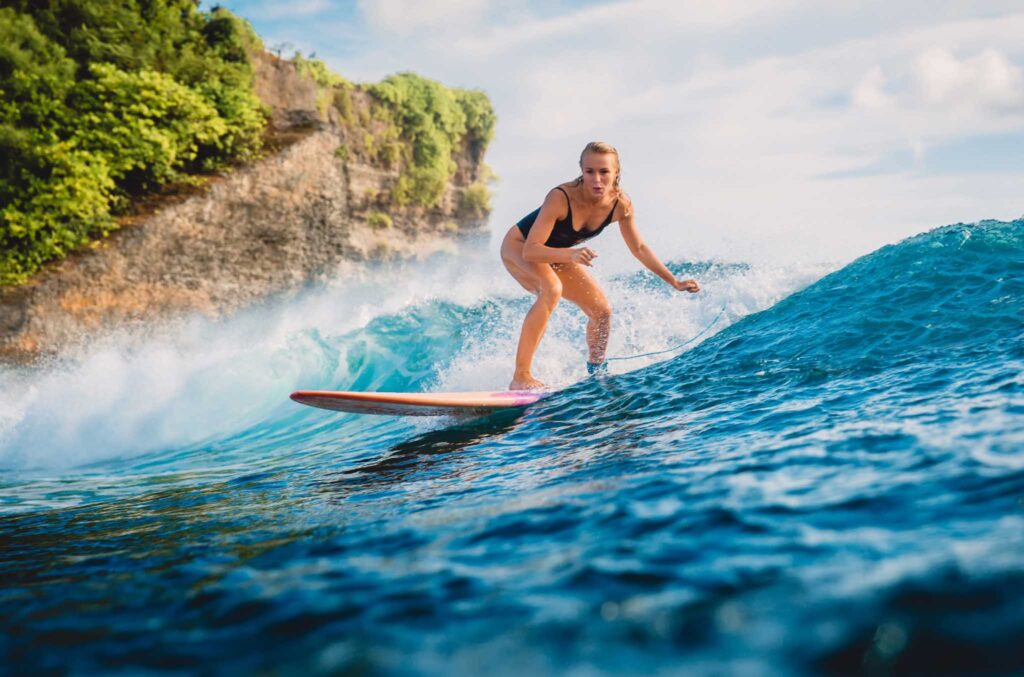
Vegan-Friendly Sunscreen
Need a cruelty-free sunscreen for your vacation? No problem! There are typically animal-based substances or by-products in sunscreen ingredients, one being collagen, which is derived from animal bones, nails, skin, hair, and ligaments. Thankfully there are now plant-based SPF products for vegans – you can easily find many articles online recommending different brands. However, if you want a genuinely animal-friendly sunscreen, you’ll need one that is considered reef safe as well. Choose a non-nano zinc oxide mineral sunscreen that doesn’t contain any of the harmful inactive ingredients in the chart above.

Do the Most Effective Sunscreens Have Higher SPFs?
UV Rays
Sun worshippers need to know all about SPF, or Sun Protection Factor. But first, we need to know that the sun’s harmful rays are UVA and UVB rays, and we must protect ourselves from both. UVB rays have a shorter wavelength and are associated with sunburn. In contrast, UVA rays have a longer wavelength and cause skin aging and wrinkles (although they can also contribute to sunburn.) This is why first you should look for a broad spectrum protection eco-friendly sunscreen option for UVA and UVB protection. Wearing sunscreen alone cannot block all UV rays, but the higher the SPF, the more is blocked.
Sunscreen Efficacy
Technically, sunscreens with a higher SPF value are more efficient at protecting you from sunburn and skin cancer. For example, SPF 30 allows 3% of the UVB rays through, and SPF 50 only allows 2%. The number associated with the SPF tells you how much longer it would take to redden while exposed than if you were not wearing any protection (i.e., SPF 30 = 30 times longer.) So, the larger the SPF, the longer you are protected.
However, the FDA contends that sunscreens with an SPF higher than 50 are misleading and may encourage users to spend more time in the sun than they would normally. Some countries have even limited labels to a maximum of SPF 50.
Remember, sunscreen is most effective when applied liberally and often, especially after swimming or sweating.
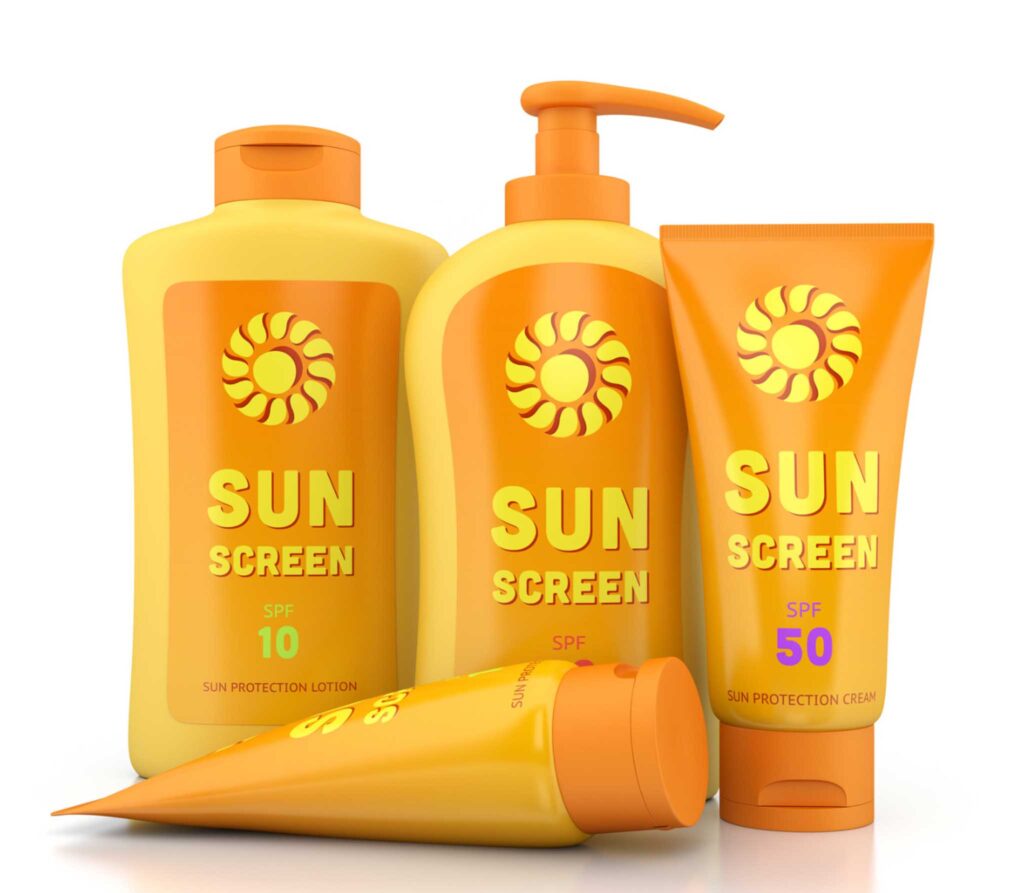
The Best Reef-Friendly Sunscreen
So, let’s recap and round that all up to determine exactly what you want to look for to ensure you’re not only buying reef-safe sunscreens but ones that are sustainable and you-friendly!
First, check the label. Look for the terms non-nano zinc oxide mineral sunscreen, biodegradable, and reef safe. Don’t stop there. Check the ingredients for any sign of the ones listed in the chart above. Next, look for an indication that it is water-resistant if you plan on getting wet.
If you require a vegan-friendly sunscreen, look for ingredients derived from animals and do some research online for brands that offer these alternatives. Avoid spray sunscreens altogether, as not only can they cause issues if inhaled, we tend not to apply them thickly enough for proper protection.
Let’s remember that eco-friendly is also about sustainability, so we should also consider the product’s packaging and disposing of it properly.
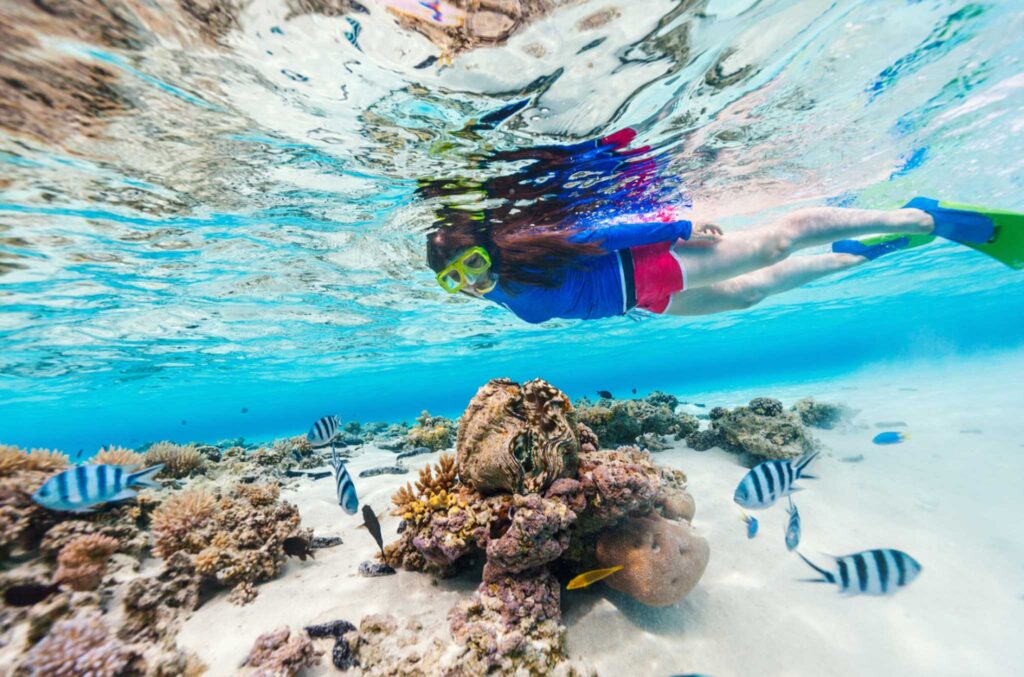
If this all seems overwhelming and you need a shortcut for now, you can look at the Best Recreational Sunscreens by the Environmental Working Group to help you find the best eco-friendly biodegradable sunscreens.
The Absolute Safest Option
Of course, a biodegradable, eco-friendly face and body sunscreen is always a good idea to protect us from UVA and UVB rays while playing in the sun. When applied correctly and frequently, we can avoid a burn and be safe from most of the damaging effects caused by the sun.
However, the reality is that the only sustainable sun protection that is 100% effective is to avoid those harmful rays. Hold on! I am not suggesting that you hide inside for the rest of your life – far from it – outdoor lovers like me would never do that. I am suggesting that you cover up with a rash guard or wide-brimmed hat if you can. Seek shade when possible – this will also help protect you from heatstroke on those scorching hot summer days at the ocean, lake, or park.

Final Thoughts about eco-friendly sunscreen
Trying to lead an eco-friendly and sustainable lifestyle may seem daunting. I hope this article has helped you understand more about how sunscreen works and how to go about buying reef-safe sunscreen. More and more green sunscreen options and sustainable personal care products are becoming available all the time, which means environmental sustainability is catching on. Yay!
Don’t forget that every journey starts with just one step, and choosing reef-safe sunscreens and adopting responsible sun protection practices might just be your first step toward a sustainable lifestyle!






